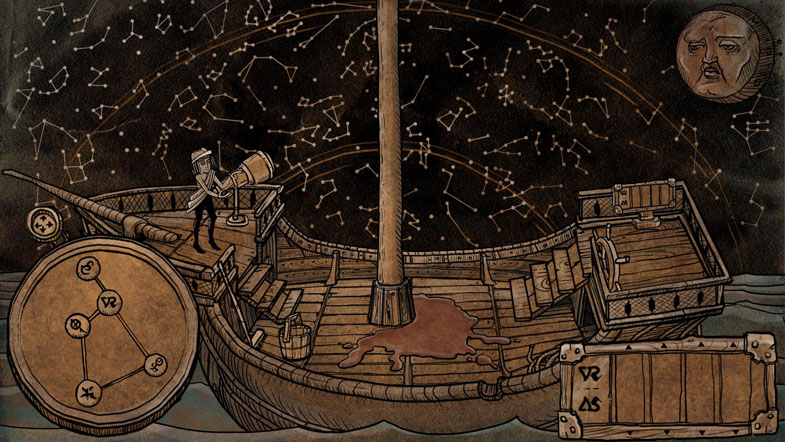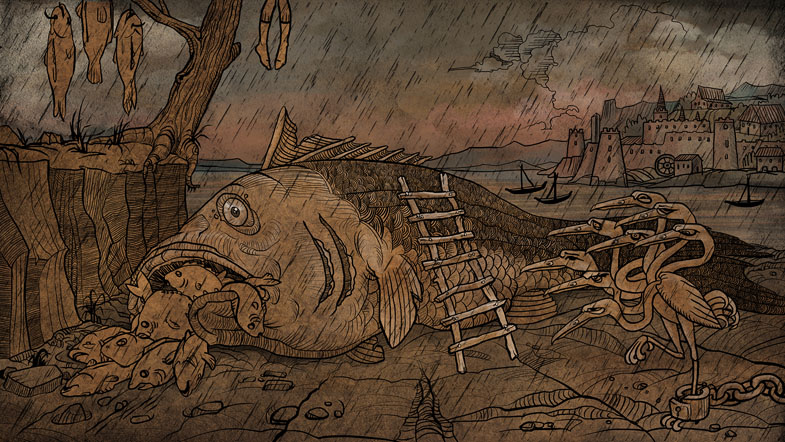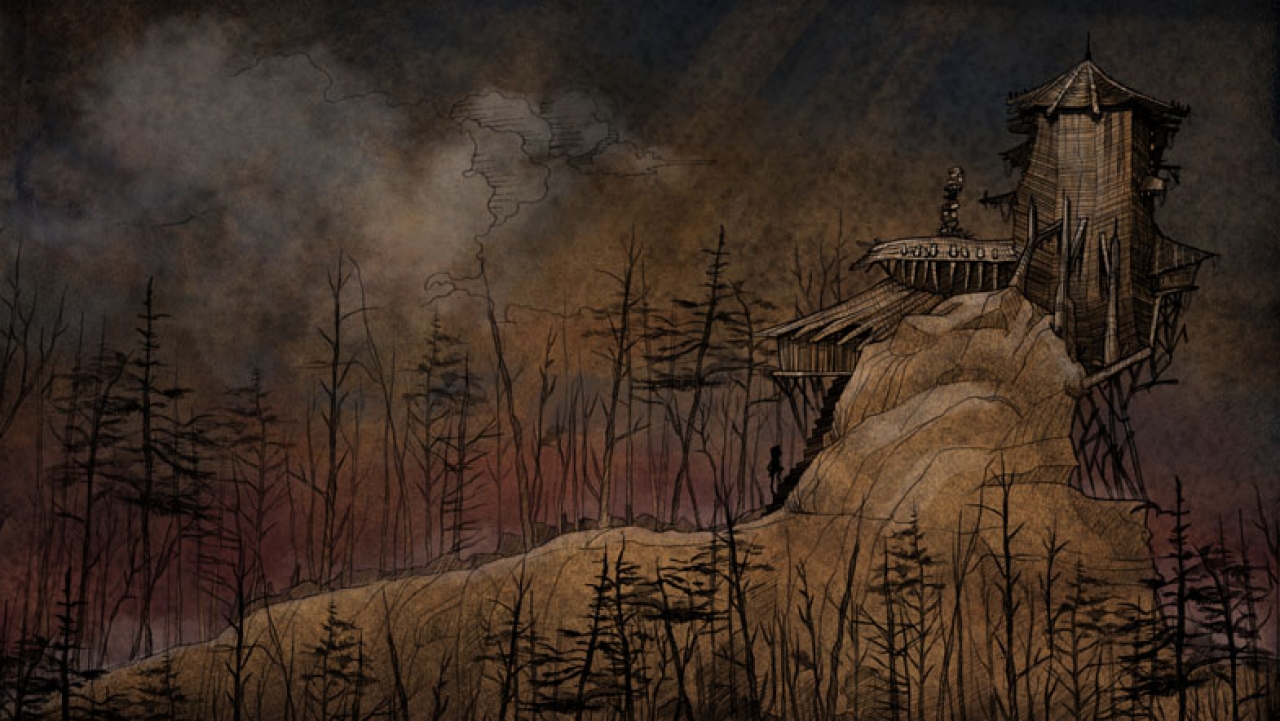Apocalipsis: Harry at the End of the World, which its makers say was inspired by 15th-century engravings, manages to be a unique little story despite its grim art style and narrative. The tone definitely has the hopeless feeling of a world in which the Black Death hangs over every aspect of daily life. Despite its dark themes, this title never gives way to crushing despair, instead leaving a glimmer of hope among bizarre and intriguing scenery.
Since it’s a point-and-click, it needs to rely on story.

Apocalipsis stars Harry, a young man trying to find a way to bring his lover back from her cruel fate of execution. People claimed she was a witch, and (small spoiler) it turns out that’s true, so there is hope Harry can perform a ritual to see her live once more. That launches Harry’s journey through a land of death, decay, and pestilence.
Most of the story is told both visually and through the actions of the protagonist, but there are occasional narrations by Nergal, the frontman for the band Behemoth. Nergal’s gothic European accent adds to the atmosphere effectively (although the default sound mixing has his voice booming way louder than the rest of the audio, so I recommend turning it down in settings). These narrations also explain to you what you’ve just experienced or foreshadow what’s to come, which successfully takes what is abstract and turns it into a concrete storyline.
All the same, there are times where it’s hard to make sense of what in hell (literally) is happening. Deformed creatures often wobble across your screen in an unsettling way, and there’s not really any way of discerning what it all means. But that’s actually fitting, since Apocalipsis is set in a time of superstition and uncertainty that had been common for centuries because no one understood why people were dying in waves. They didn’t understand the Plague.
Apocalipsis does a fair job of crafting a narrative, especially for a title with such a small team of developers, but I don’t want to mislead you on this. Games like King’s Quest V are the gold standard of this genre, and their storytelling ability is light-years beyond what we see here.
The other half of the equation is the puzzles.

Part of what makes King’s Quest V great is not just the plot, but the way it’s told through the puzzles. Everything fits together in an unpredictable and fantastical way that adds to the story. An item you acquire early on might not be used until the end, and you need to use the narrator’s rich descriptions, the world’s mythology, and sometimes even puns to figure it out. Apocalipsis is limited in this aspect: The level of detail suffers, and so do the puzzles.
Smaller point-and-click titles generally overcome resource limitations by having puzzles that are limited to one area, with every item you need to solve the puzzle being in the same room. In one way, this makes small titles like Apocalipsis more enjoyable, because there are none of the abstract, almost impossible puzzles that King’s Quest V is notorious for, but on the other hand, it often means that many puzzles are too easy.
Overall, the difficulty of Apocalipsis is just about right, though. That being said, there are plenty of obvious tasks that just seem be there for killing time, as well as brain teasers that are so abstract that I’m still not sure how or why I solved them.
The Apocalipsis art style is what sets it apart from other entries in the genre.
Something that is often overlooked in point-and-click narrative is the artwork. This is where Apocalipsis really stands out. Where other titles are often cartoony, this game sets the tone with fascinating hand-drawn curiosities. The creativity of the artists, both on the dev team and those from the 15th century, spark your imagination as your eyes wander over the scenes.
The animation is fittingly done in the style of illustrations inked onto paper, cut out, and given a few joints that move in two dimensions. This takes a bit away from the very rare, tender moments in the game, but it’s a good trade since the unnatural, almost puppet-like movements enhance the uncanny and unsettling creatures and scenery. Overall, the otherwise average gameplay and story are brought to life by this awesome aesthetic.
The Verdict: Good
Apocalipsis’ art style complements its gloomy tale incredibly well. While the story is nothing to write home about and the puzzles range from boring and easy to interesting and difficult, the voice acting and visual aesthetic make this title stand out from other point-and-click games. If you’re a fan of games as visual art, check this one out.


